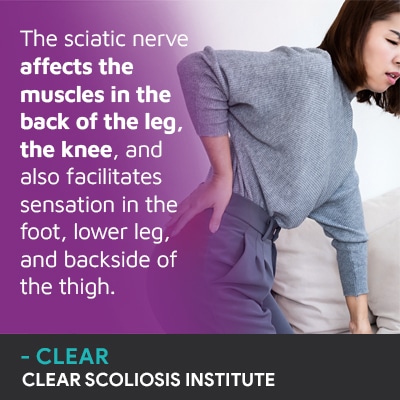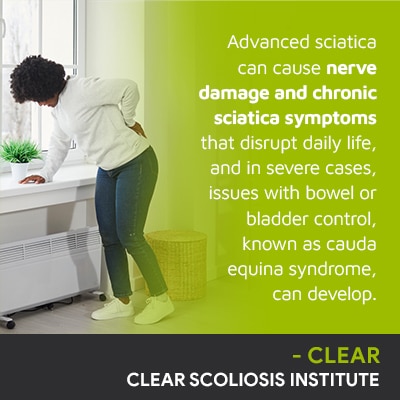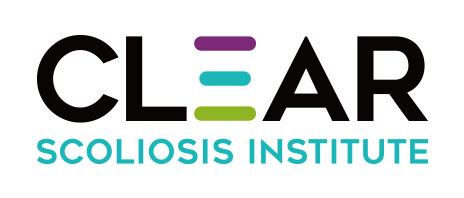![What to Expect in the Last Stages of Sciatica [Explained] Image](https://clear-institute.org/wp-content/uploads/2025/03/last-stages-of-sciatica.jpg)
Despite sciatica being regarded by many as an actual condition, the term, instead, is referring to a set of symptoms, with no indication of their cause. The sciatic nerve is the largest in the body with an extensive pathway. Sciatic nerve pain can be felt where the nerve starts in the lower back and throughout the lower body.
The last stages of sciatica are characterized by increasing pain and potential nerve damage. At this stage, disruptions to movement can be severe, and pain can be chronic and debilitating. The longer sciatic nerve pain is left untreated, the more likely permanent nerve damage is, along with the need for surgical intervention.
It's said that everyone will experience some level of back pain throughout their lives, and that nerve-related back pain is among the most severe and disruptive.
As the largest nerve in the body, the sciatic nerve starts in the lumbar spine and extends down the back of the hip, buttock, leg, and into the foot.
In most cases, sciatic nerve pain is felt down the body's left side, but it can also involve the right, and in rare cases, can affect both sides of the body.
As a mixed nerve, the sciatic nerve contains both motor and sensory fibers, so symptoms of sciatic nerve compression can involve mobility issues and strange sensations.
The sciatic nerve affects the muscles in the back of the leg, the knee, and also facilitates sensation in the foot, lower leg, and backside of the thigh.
Sciatica pain develops when there is pressure on the sciatic nerve and/or the nerve it damaged, disrupting its function.

So what does it feel like if the sciatic nerve is compressed?
Different people will experience symptoms differently based on different severity levels and causes.
Most cases of sciatica pain involve flare-ups: periods during which symptoms intensify and then abate.
Sciatica pain can range from mild and intermittent to chronic debilitating pain that disrupts daily life.
Symptoms of sciatic nerve compression can include:
Pain intensity can vary, but the longer the cause of sciatica pain remains unknown and unaddressed, the more likely permanent nerve damage is.
When sciatica pain is triggered by an overuse injury or strain, symptoms can abate on their own in a matter of weeks once the injury is healed, but if persistent symptoms don't go away, or get worse, this indicates an underlying condition causing the persistent pain.
The most common cause of sciatic nerve compression is spinal degeneration, often involving the spine's discs.
In fact, degenerative disc disease is a contributing factor in the development of a number of spinal issues/conditions.
An intervertebral disc sits between adjacent vertebrae in the spine, and disc health directly affects overall spinal health, including the health of the spinal nerves within the spinal cord.
Whether it's caused by natural age-related spinal degeneration or the presence of another spinal condition, changes in disc health can involve discs changing shape, becoming bulging, or herniating.
When a disc changes shape, it's taking up more space within the spine, and if disc degeneration is occurring in the lumbar spine, it can cause the sciatic nerve to become compressed, impinged, inflamed, and irritated.
Anything that puts pressure on the sciatic nerve is capable of causing sciatica pain, and in addition to disc degeneration, spinal stenosis is also associated with sciatica.
Spinal stenosis is a condition that causes a narrowing of the spinal canal, through which the spinal cord containing 31 pairs of spinal nerves pass.
If there is a narrowing of the spinal canal in the lumbar spine, the sciatic nerve can become compressed, causing sciatica symptoms.
Additional causes can include osteoarthritis, obesity, injury, piriformis syndrome, and scoliosis.
Some cases of sciatica will resolve on their own, particularly those caused by a recent strain or injury, but when the sciatic pain is caused by an underlying condition, the condition causing the discomfort has to be addressed for permanent pain management.
If sciatica is left untreated, pressure on the nerve continues, and eventually, nerve damage can occur.
The last stages of sciatica are characterized by increasing and/or constant pain and mobility issues.
Severe pain in the affected leg, mobility issues, numbness, tingling sensations, and muscle weakness are additional severe sciatica symptoms.
Advanced sciatica can cause nerve damage and chronic sciatica symptoms that disrupt daily life, and in severe cases, issues with bowel or bladder control, known as cauda equina syndrome, can develop.
To summarize, the signs of advanced nerve compression can include:
The longer the cause of sciatic nerve compression is left unaddressed, the more damaged the nerve can become over time, and nerve damage requires more intensive forms of treatment than treating sciatica early on, before damage has occurred.

The sooner the cause of the compression is addressed, the more likely it is that sciatic nerve damage can be prevented.
Non surgical intervention can involve physical therapy, chiropractic care, hot/cold therapy, rest, and pain medication.
When an underlying spinal condition is the cause, the issue within the spine has to be addressed to take pressure off the sciatic nerve; for example, if scoliosis develops in the lumber spine where the sciatic nerve starts, the unnatural spinal curve and rotation can compress/impinge/irritate/inflame the sciatic nerve.
Physical Therapy can also increase circulation and blood flow around the nerve, making the nerve's surroundings more conducive to healing.
If the structural nature of scoliosis is addressed through chiropractic care that successfully realigns the spine, and physical therapy to increase spinal support/stability, this can take pressure off the sciatic nerve, reduce inflammation, and alleviate symptoms.
Nonsteroidal anti-inflammatory medications can be prescribed to reduce inflammation and provide pain relief.
Medications that specifically target nerve pain, like gabapentin, can be prescribed, along with muscle relaxants to ease tight muscles.
Alternating cold and heat on the area can also help with pain management.
Surgical treatment options can include spinal decompression to take pressure off the nerve, a microdiscectomy where a portion of a herniated disc is removed to take pressure off the nerve, a laminectomy that involves the removal of bone and/or tissue compressing the sciatic nerve, or spinal fusion that addresses an unnatural spinal curve by fusing two or more vertebrae together and holding the spine in place by attaching metal rods to the spine.
Here at the CLEAR Scoliosis Institute, we specialize in non surgical intervention of scoliosis, and when it comes to lumbar scoliosis, sciatica symptoms are a common complication.
Lower back pain is common; the lower back has the responsibility of supporting the weight of the cervical and thoracic sections above, the entire trunk, and its vertebrae facilitate and feel the effects of a number of strenuous movements: lifts, twists, and deep bends.
When the sciatic nerve is exposed to uneven pressure, it can become irritated and cause a number of symptoms felt throughout the lower body, where the nerve passes.
As the sciatic nerve starts in the lumbar spine and extends down the back of the lower body and into the feet, the lower back and body are commonly affected, and symptoms can include pain, mobility issues, difficulty sitting for extended periods of time, sensations such as tingling and numbness felt throughout the lower body, and weak muscles.
Proactive treatment that determines and addresses the underlying cause of sciatic pain is the best way to approach long-term sciatic pain management; it can also mean avoiding the risks associated with surgical treatment.

CLEAR provides a unique and innovative way of understanding scoliosis. Sign up to receive facts and information you won’t find anywhere else.
